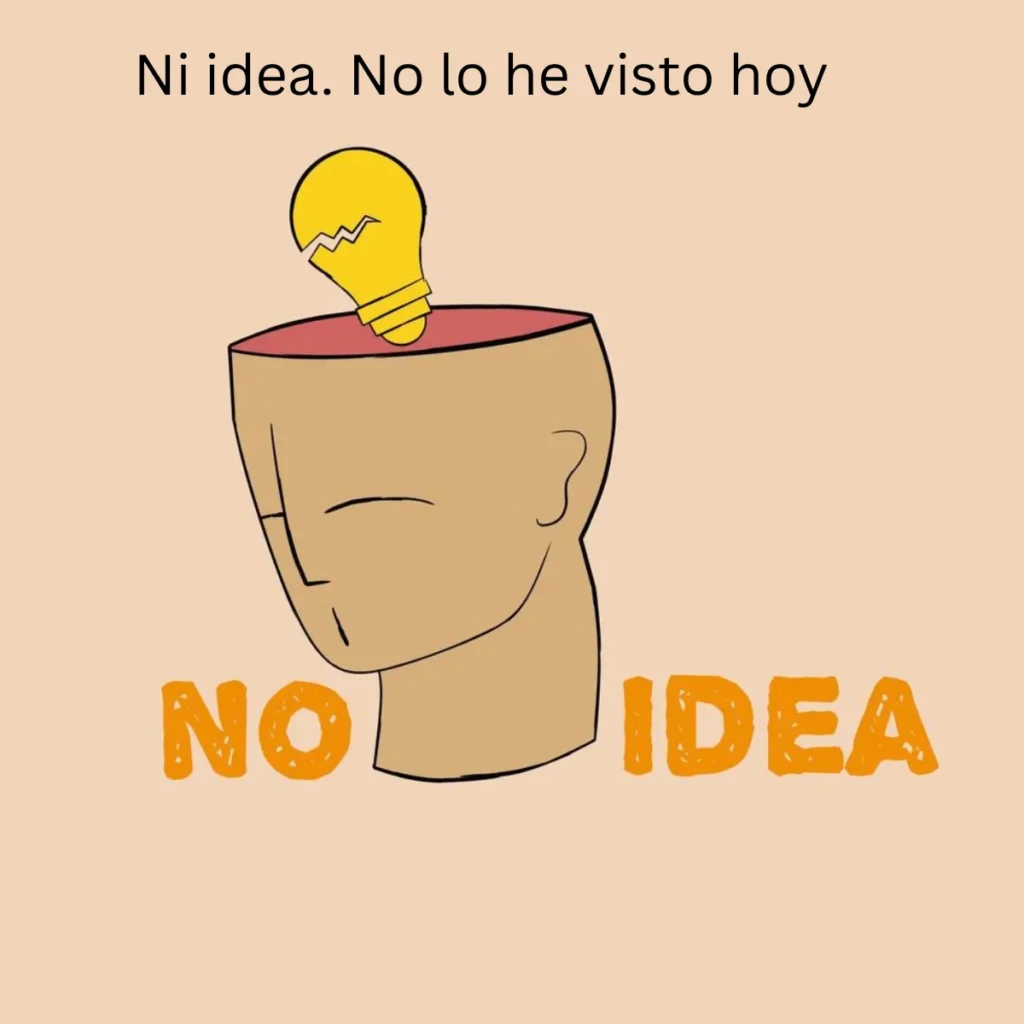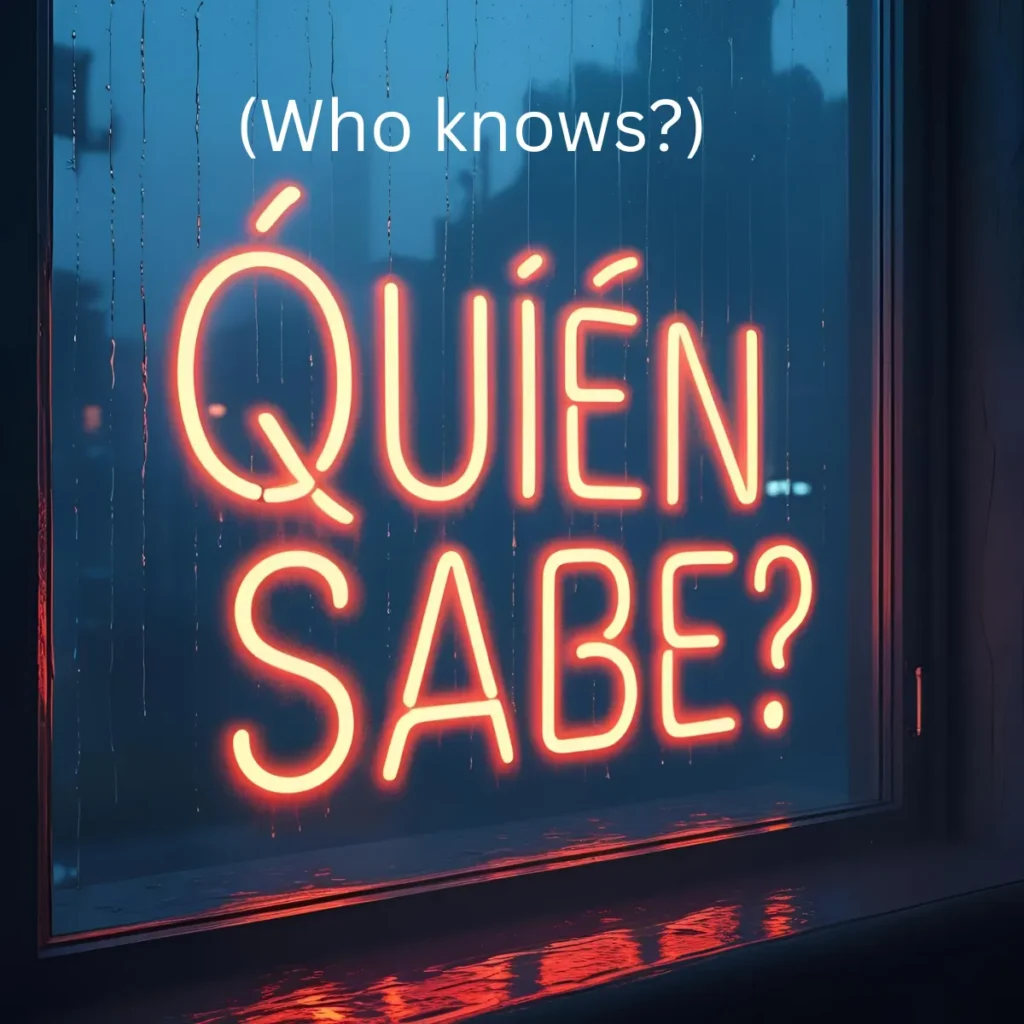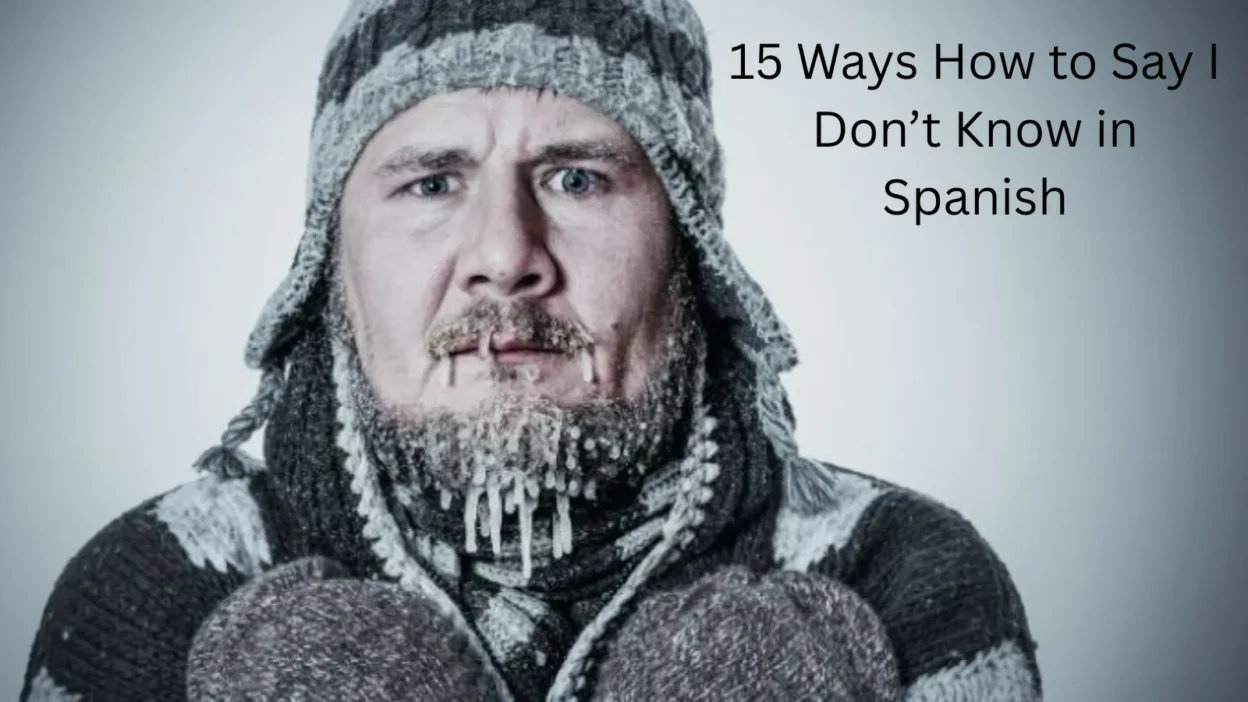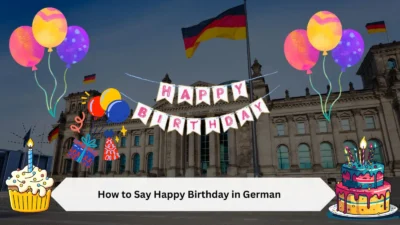Learning 15 ways how to say I don’t know in Spanish will help you respond naturally in everyday conversations while sounding more fluent and confident.
Whether you’re speaking casually with friends, answering a question in class, or navigating a travel situation, knowing multiple ways to say I don’t know will make your speech more authentic. Spanish offers both formal and informal expressions for this simple phrase, each suited for different situations.
In this guide, you’ll discover 15 ways how to say I don’t know in Spanish, along with examples so you can choose the right response for any context.
I don’t know with Dialogue & Origins
here are 15 different ways to say I don’t know in Spanish, each paired with a sample conversation and a quick cultural or historical note to help you sound more authentic.
1. No sé (I don’t know)
Origin:
This is the most direct and standard way to say I don’t know. It’s used across all Spanish-speaking countries.
Example:
👤 User A: ¿Qué hora es la reunión?
👤 User B: No sé. Creo que a las 3.
Use:
Universal, formal or informal.
2. Ni idea (No idea)

Origin:
Common in both Spain and Latin America. It comes from the phrase “No tengo ni idea” (I don’t have the slightest idea).
Example:
👤 User A: ¿Dónde está Juan?
👤 User B: Ni idea. No lo he visto hoy.
Use:
Informal; friendly tone.
3. No tengo ni idea (I have no idea)
Origin:
A slightly more expressive and formal version of “ni idea.”
Example:
👤 User A: ¿Por qué cancelaron la clase?
👤 User B: No tengo ni idea. El profesor no explicó nada.
Use:
Neutral to formal.
4. Quién sabe (Who knows?)

Origin:
Often used in Latin America, this rhetorical phrase reflects uncertainty or indifference.
Example:
👤 User A: ¿Cuándo volverán?
👤 User B: Quién sabe. Dijeron que era pronto.
Use:
Informal, casual.
5. No estoy seguro / segura (I’m not sure)
Origin:
Used when you’re uncertain but don’t want to give a hard “I don’t know.”
Example:
👤 User A: ¿Ese lugar está abierto hoy?
👤 User B: No estoy seguro, pero podemos llamar.
Use:
Slightly more polite and careful.
6. No sabría decirte (I wouldn’t know what to say)
Origin:
A softer, more humble way to say you don’t know—often used when you don’t want to appear completely uninformed.
Example:
👤 User A: ¿Es esa la salida correcta?
👤 User B: No sabría decirte. Nunca he venido por aquí.
Use:
Polite and thoughtful.
7. No lo sé (I don’t know it)

Origin:
This emphasizes the “it” (lo) that you don’t know. Grammatically precise and common in formal writing or speech.
Example:
👤 User A: ¿Cuál es la capital de Belice?
👤 User B: No lo sé. Lo buscaré.
Use:
More formal, academic or professional contexts.
8. No tengo la menor idea (I don’t have the slightest idea)
Origin:
An idiomatic expression used for emphasis, common in both Spain and Latin America.
Example:
👤 User A: ¿Qué significa esa palabra?
👤 User B: No tengo la menor idea. Es la primera vez que la escucho.
Use:
Emphatic and expressive; neutral to informal.
9. Ni la más mínima idea (Not the tiniest idea)
Origin:
Used for extra emphasis, like saying “not the faintest clue” in English.
Example:
👤 User A: ¿Por qué se fue tan temprano?
👤 User B: Ni la más mínima idea.
Use:
Very informal and emphatic.
10. Vete tú a saber (Go figure / Who knows)
Origin:
This is a colloquial phrase mostly used in Spain. It expresses resignation or confusion.
Example:
👤 User A: ¿Qué estaban pensando?
👤 User B: Vete tú a saber…
Use:
Casual, often with a sigh or shrug.
11. No me acuerdo (I don’t remember)
Origin:
Technically not “I don’t know,” but often used in similar contexts when you once knew something but forgot.
Example:
👤 User A: ¿Cómo se llama ese actor?
👤 User B: No me acuerdo, pero sé que es famoso.
Use:
Honest and informal.
12. Estoy perdido / perdida (I’m lost)
Origin:
Used figuratively to show you’re confused or don’t know what’s going on.
Example:
👤 User A: ¿Entendiste la explicación del profe?
👤 User B: Estoy perdida. No entendí nada.
Use:
Casual, especially among students or coworkers.
13. No estoy al tanto (I’m not up to date / aware)
Origin:
Used when referring to news, updates, or current events. More common in Spain.
Example:
👤 User A: ¿Ya aprobaron la nueva ley?
👤 User B: No estoy al tanto, no he visto las noticias.
Use:
Neutral, slightly formal.
14. No sé qué decirte (I don’t know what to tell you)
Origin:
Used when someone expects a response or solution, but you’re at a loss.
Example:
👤 User A: Me dejó en visto otra vez…
👤 User B: Uy… no sé qué decirte.
Use:
Empathetic and conversational.
15. Estoy igual que tú (I’m in the same boat / I don’t know either)
Origin:
This is a friendly way to express shared confusion.
Example:
👤 User A: ¿Sabes qué tenemos que hacer para el proyecto?
👤 User B: Estoy igual que tú. Nadie explicó nada.
Use:
Informal, friendly.
Conclusion:
💡 Mastering 15 ways how to say I don’t know in Spanish will make your conversations more natural, adaptable, and confident. Whether you’re responding casually among friends or politely in a formal setting, choosing the right phrase shows your awareness of tone and context.
By practicing these expressions, you’ll not only improve your fluency but also feel more comfortable navigating situations when you don’t have an immediate answer. Remember — even saying I don’t know in Spanish can be an opportunity to keep the conversation flowing and build stronger connections.



